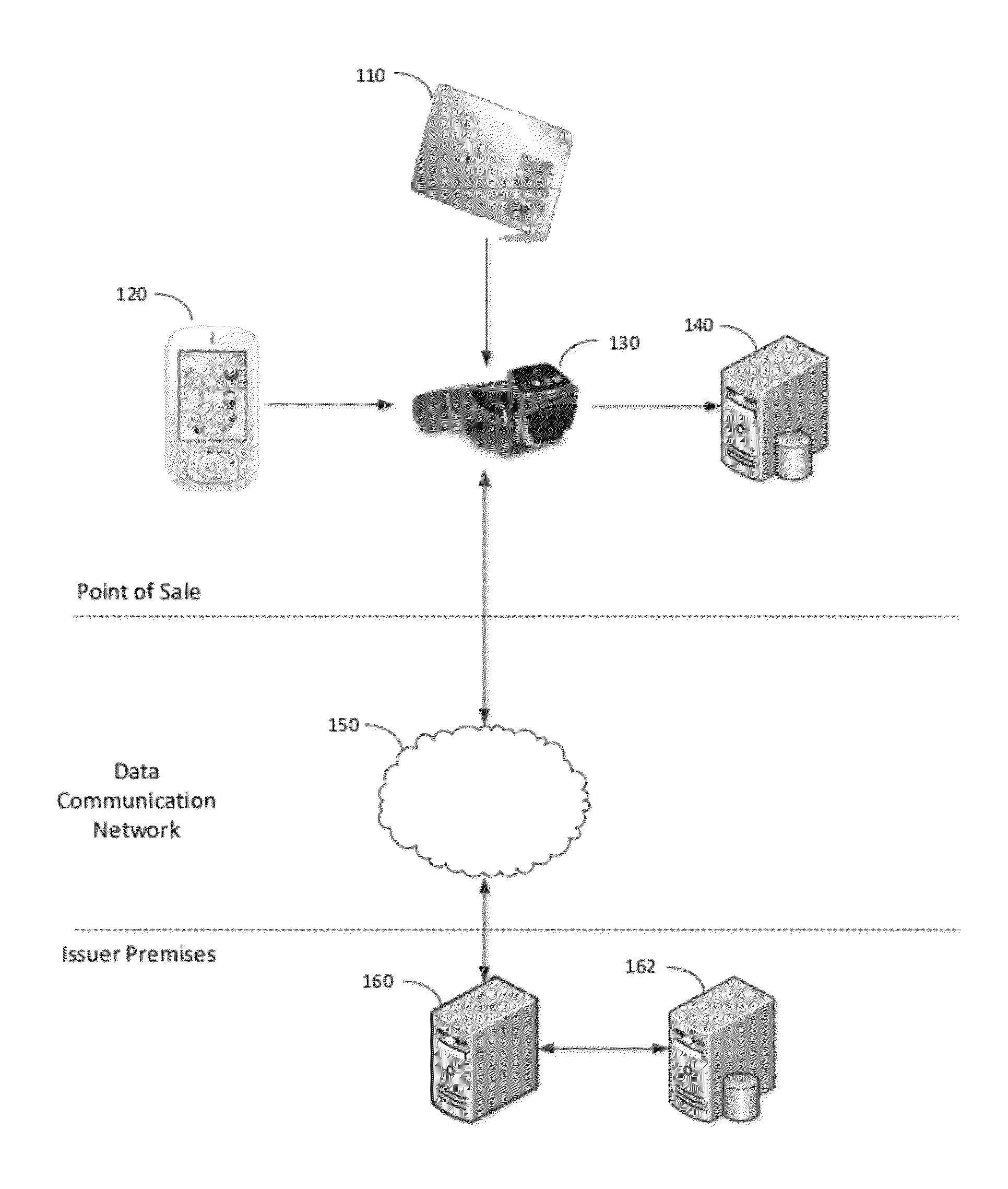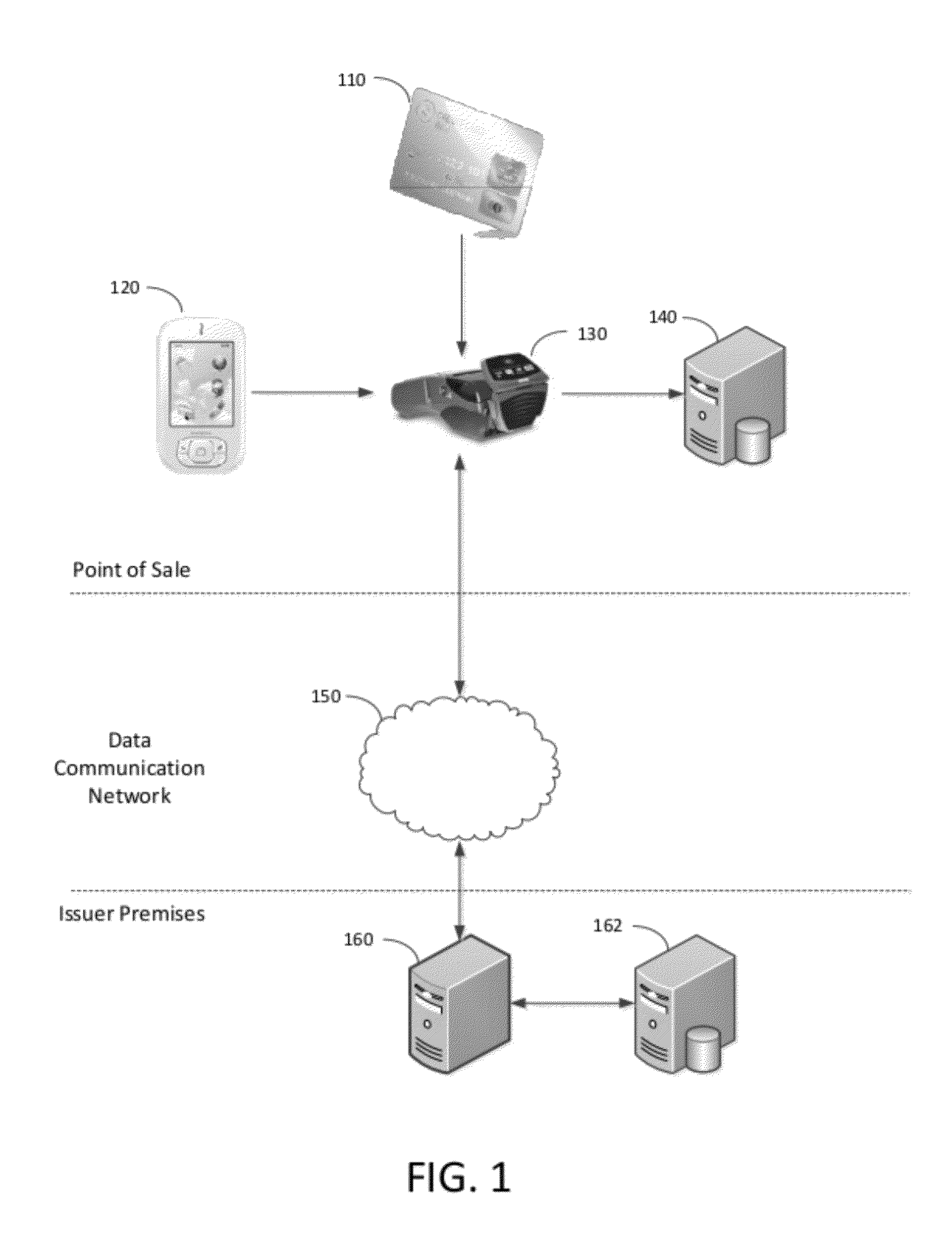Secure Credit Transactions
a credit transaction and credit technology, applied in the field of information security, can solve problems such as identity theft, affecting privacy and the economy, and costing cardholders and credit issuers about $500 million, and achieve the effect of preventing identity theft and preventing identity th
- Summary
- Abstract
- Description
- Claims
- Application Information
AI Technical Summary
Benefits of technology
Problems solved by technology
Method used
Image
Examples
first embodiment
[0013]Therefore, in a first embodiment there is provided a method for engaging in a transaction with an individual having possession of a credit or debit card, the card having a primary account number digitally encoded thereon, the primary account number being uniquely associated with an issuer. The method includes, in a transaction acquiring device, receiving the primary account number using a first input and receiving an encryption seed using a second input. The encryption seed must have been previously obtained from the issuer by an authentication device of the individual, wherein the individual must have passed an authentication challenge of the authentication device before the encryption seed may be received by the transaction acquiring device. Next, in the transaction acquiring device, the method calls for applying a one-way hash function to a combination of the primary account number and the encryption seed, thereby producing a transaction hash. Next, the method requires tran...
second embodiment
[0015]In a second embodiment there is provided a method for authorizing a requested transaction. This method includes two phases: an initialization phase, and a transaction phase occurring after the initialization phase. During the initialization phase, the method includes generating an encryption seed in response to receiving a request from an authentication device of an individual, wherein the individual must pass an authentication challenge of the authentication device before the request may be received. Also in the initialization phase, the method calls for forming an issuer hash by applying a one-way cryptographic hash function to a combination of the generated encryption seed and a primary account number that is uniquely associated to the individual. Finally in the initialization phase, the method requires storing a record in a database, the record including the issuer hash, the primary account number, and the generated encryption seed. In the transaction phase, the method req...
PUM
 Login to View More
Login to View More Abstract
Description
Claims
Application Information
 Login to View More
Login to View More - R&D
- Intellectual Property
- Life Sciences
- Materials
- Tech Scout
- Unparalleled Data Quality
- Higher Quality Content
- 60% Fewer Hallucinations
Browse by: Latest US Patents, China's latest patents, Technical Efficacy Thesaurus, Application Domain, Technology Topic, Popular Technical Reports.
© 2025 PatSnap. All rights reserved.Legal|Privacy policy|Modern Slavery Act Transparency Statement|Sitemap|About US| Contact US: help@patsnap.com



